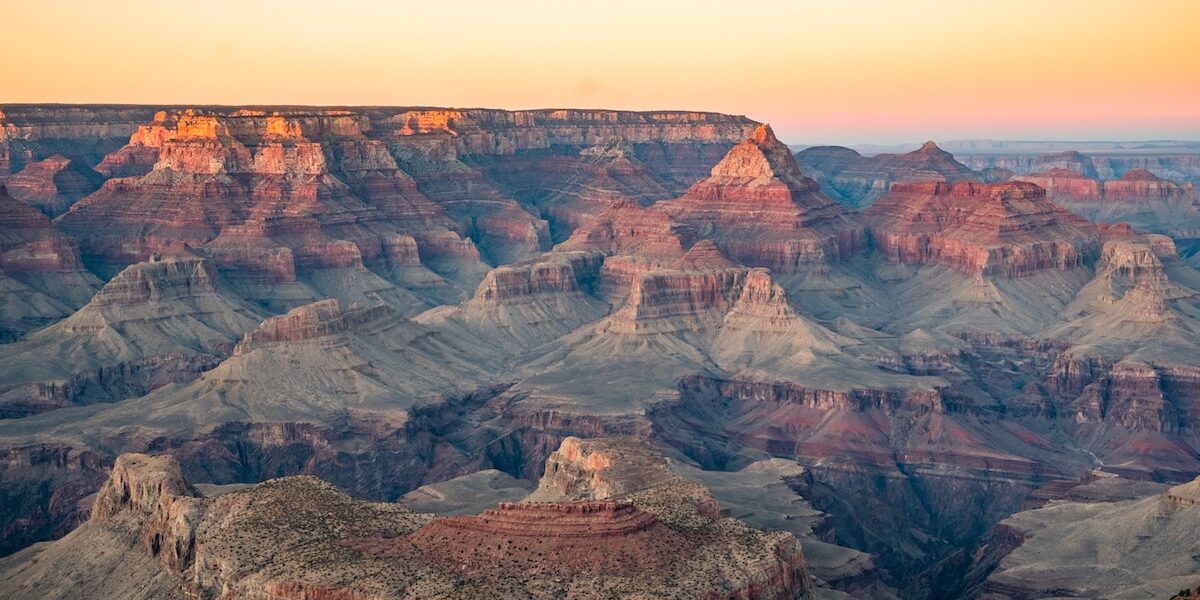By Caroline Coogan, Research Intern, The Ocean Foundation
Each time I travel to New York I am struck – and often overwhelmed – by the towering buildings and bustling life. Standing beneath a 300 m tall building or looking over its observation deck, the city can either be an urban jungle looming overhead or a twinkling toy city shining below. Imagine jumping from the heights of New York City to the depths of the Grand Canyon, 1800 m down.
The immensity of these man-made and natural wonders has inspired artists, naturalists, and scientists for centuries. A recent exhibit by Gus Petro imagines the city nestled amongst the valleys and peaks of the Grand Canyon – but what if I told you there was a canyon twice its size already in New York? No need for photoshop here, the Hudson Canyon is 740 km long and 3200 m deep and mere miles down the Hudson River and beneath the deep blue sea…
The Mid-Atlantic shelf is pock-marked with canyons and seamounts, each just as impressive as the Grand Canyon and just as bustling as New York City. Vibrant colors and unique species line the floors or cruise through the depths. From Virginia to New York City there are ten notable deep sea canyons teeming with life – ten canyons leading us to another one of our 10th anniversary celebrations.
The canyons off of Virginia and Washington, DC – the Norfolk, Washington, and Accomac Canyons – have some of the southernmost examples of cold water corals and their associated fauna. Corals are typically associated with warm, tropical waters. Deep water corals are just as important and host just as diverse an array of species as their beachy cousins. The Norfolk Canyon has been recommended as a protected marine sanctuary time and again, a typical example of the way we treat our offshore treasures. It was twice a dumping ground for radioactive waste and is currently under threat from seismic surveys.
Moving farther north brings us to the Baltimore Canyon, remarkable for being one of only three methane seeps along the Mid-Atlantic shelf. Methane seeps create a truly unique physical and chemical environment; an environment to which some mussels and crabs are well suited. Baltimore is critical for its abundance of coral life and function as nursery grounds for commercial species.
These deep sea canyons, such as Wilmington and Spencer Canyons, are productive fishing grounds. The diversity and high abundance of species create an ideal location for recreational and commercial fishers. Everything from crabs to tuna and sharks can be fished here. As they are critical habitat for many species, protecting canyons during spawning seasons could do a lot of good for fishery management. Tom’s Canyon Complex – a series of several smaller canyons – is also singled out for its spectacular fishing grounds.
As it is just a few days after Halloween, this wouldn’t be much of a post without mentioning something sweet – bubblegum! Coral, that is. This evocatively named species has been found by NOAA’s deep sea explorations in Veatch and Gilbert Canyons. Gilbert was not originally singled out for having a high diversity of corals; but a NOAA expedition recently discovered just the opposite was true. We are learning all the time how much diversity there is to be found in what we assume is lifeless swaths of the ocean floor. But we all know what happens when we assume!
Following this trail of canyons is the grandest of them all – the Hudson Canyon. Weighing in at 740 kilometers long and 3200 meters deep, it is twice as deep as the awe-inspiring Grand Canyon and a haven for fauna and flora – from the benthic creatures in the depths to the charismatic whales and dolphins cruising nearer the surface. As its name implies, it is an extension of the Hudson River system – revealing the oceans direct connections to the land. Those who know it will think of plentiful fishing grounds for tuna and black sea bass. Do they also know that Facebook, email, and BuzzFeed all come from the Hudson Canyon? This undersea region is a nucleus of fiber-optic telecommunication cables that plug us in to the wide world. What we return to it is less than stellar – pollution and trash are channeled from sources on land and settle into these deep canyons right alongside their diverse array of species.
The Ocean Foundation is celebrating our tenth anniversary in New York City this week – what we also hope to be celebrating soon is the protection of submarine canyons. Supporting spawning aggregations of fish, important nursery grounds, marine mammals large and small, and a host of benthic creatures, these canyons are a stunning reminder of the diversity of life within our waters. Skyscrapers looming above the streets of New York mimic the vast canyons in the ocean floor. The buzz of life on New York streets – the lights, the people, the news tickers, the phones and tablets connected to the internet – also mimics the plentiful life under the sea and reminds us how important they are to our daily lives on land.
So what do the Grand Canyon and New York City have in common? They are more-visible reminders of the natural and man-made wonders that lie beneath the waves.







